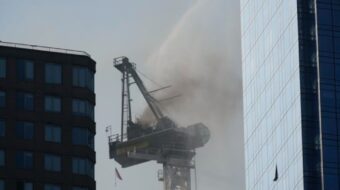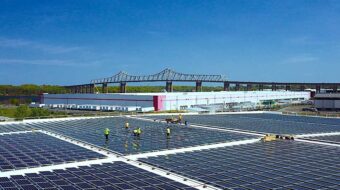
Which is a better metaphor to describe the lives of U.S. working people under capitalism: an escalator or a treadmill?
At one time one could argue with some evidence that an ascending escalator was an apt description. Between 1945 and 1975, U.S. capitalism went through an exceptional – not normal – phase of development.
Employment, wages and benefits steadily climbed upward for substantial sections of the working class in tandem with economic growth rates and profits. It seemed as if capitalism’s negative features – boom and bust, harsh exploitation, instability, class polarization, mass impoverishment, etc. – had permanently given way to steady growth and broadly shared prosperity. The American Dream for the first time seemed to be within everybody’s reach.
But much to the surprise of many this “Golden Age” of capitalism didn’t last. By the mid-1970s stagflation, rising unemployment and declining wages took hold and the preceding period of capitalist development became the stuff of nostalgia. Over the next three decades the circumstances for working people continued to deteriorate, thanks to neoliberal globalization, the takeover of the economy by nonproductive financial capital, and a right-wing-led ruling class offensive.
The “up” escalator began to morph into a fast moving treadmill for countless numbers of working people. And with the Great Recession of 2008 the metamorphosis was complete as working people in their vast majority not only found themselves on a treadmill, but also were unable to keep pace, with many falling far behind.
Meanwhile, the 1 percent not only made their way through the Great Recession, but also enriched themselves many times over.
What is the upshot of all this?
We are in a new era of capitalist development. The class struggle has intensified and widened.
Needed are new mass and militant forms of struggle (like the mass struggles in Wisconsin, Ohio, and Wall Street’s Zuccotti Park) and new demands (massive public works jobs program with affirmative action, democratic takeover of the financial sector, etc.) that correspond to the scope of the crisis and the changing consciousness of the multiracial working class.
Old forms of struggle that didn’t prioritize mass mobilization, and the old demands that were shaped by the immediate post-World-War-II capitalist economy, no longer fill the bill.
Of crucial importance in this new era is unity along racial and gender lines, which means a consistent and sustained struggle against racial and gender discrimination.
Finally, the road to slowing down and eventually stepping off the treadmill of capitalism in its new phase goes through the 2012 elections. More specifically, the decisive defeat of the right that dominates the Republican Party is imperative.
Its defeat will open a new terrain of struggle on which the working class in all its diversity and its many allies can project and win solutions to the new problems that this era of capitalist development presents.
Photo: Farhad sh // CC 2.0











